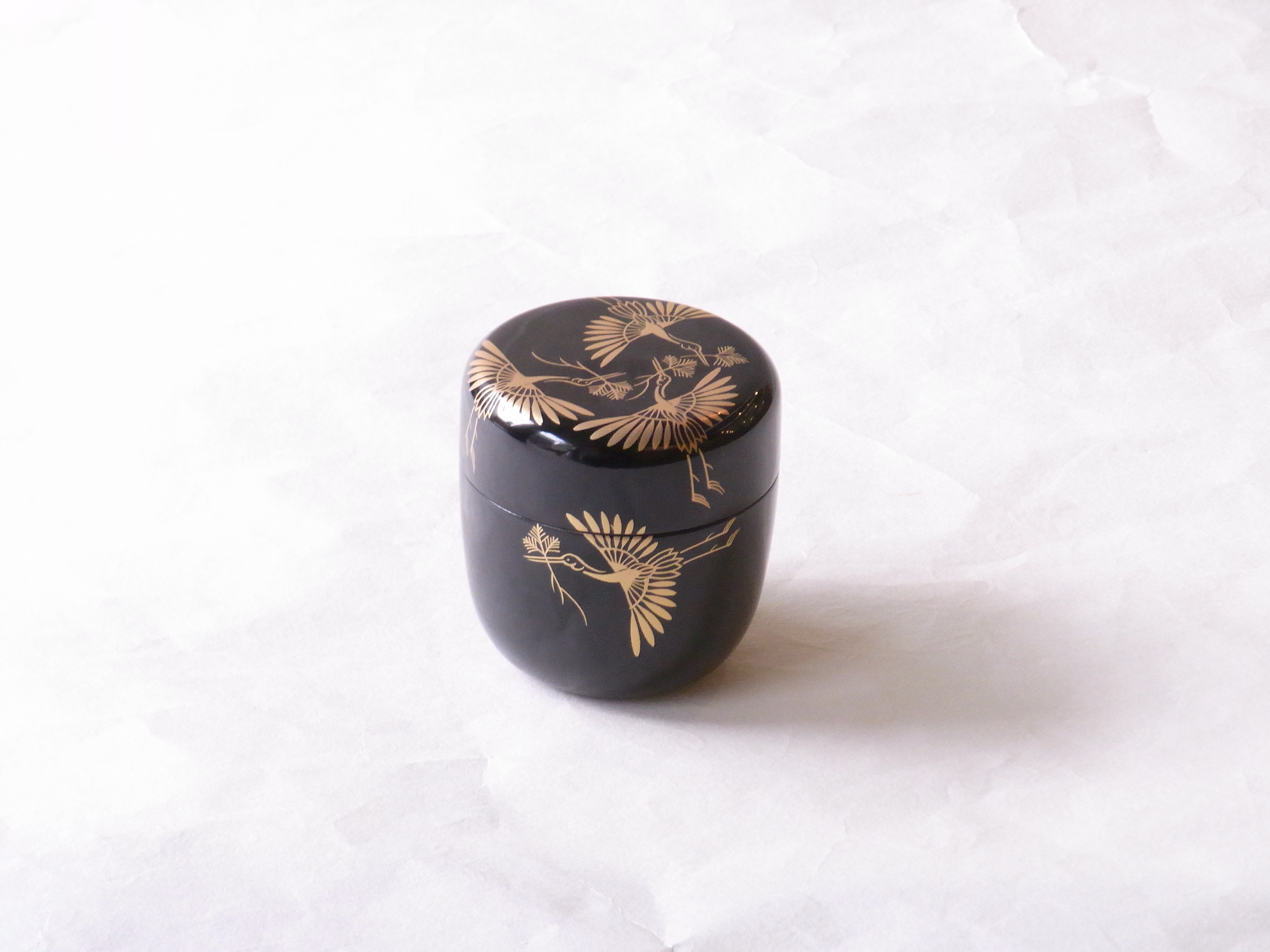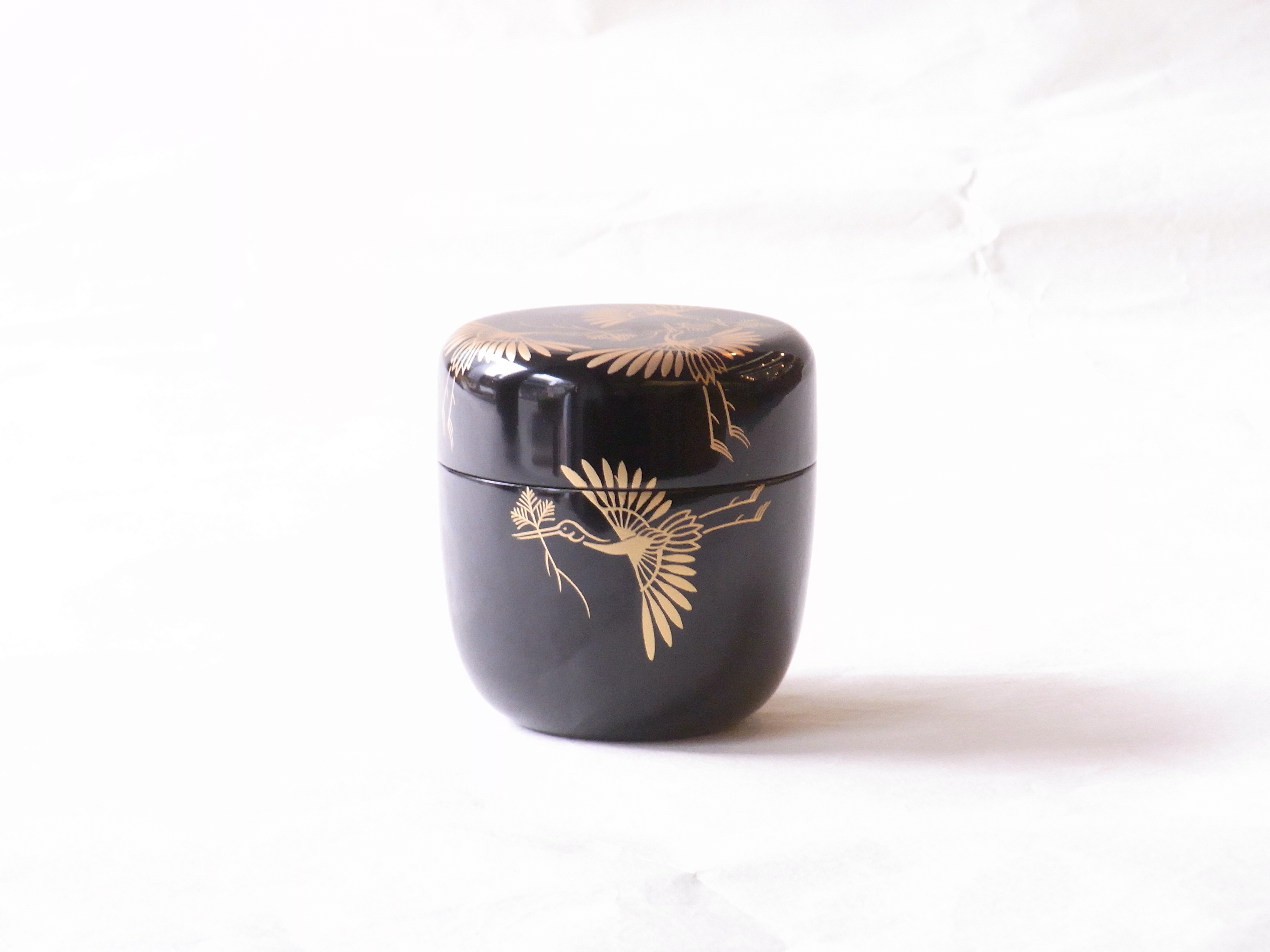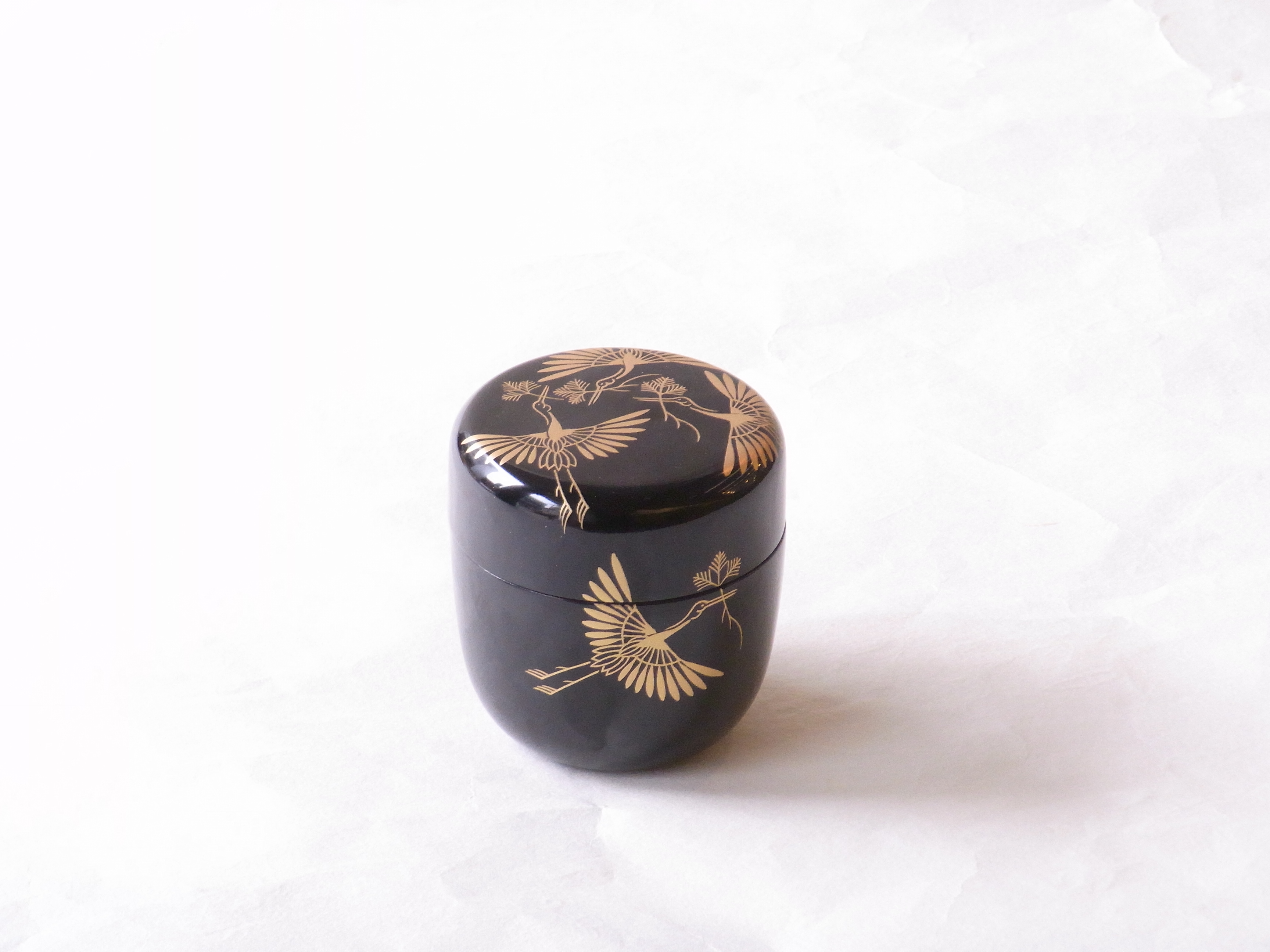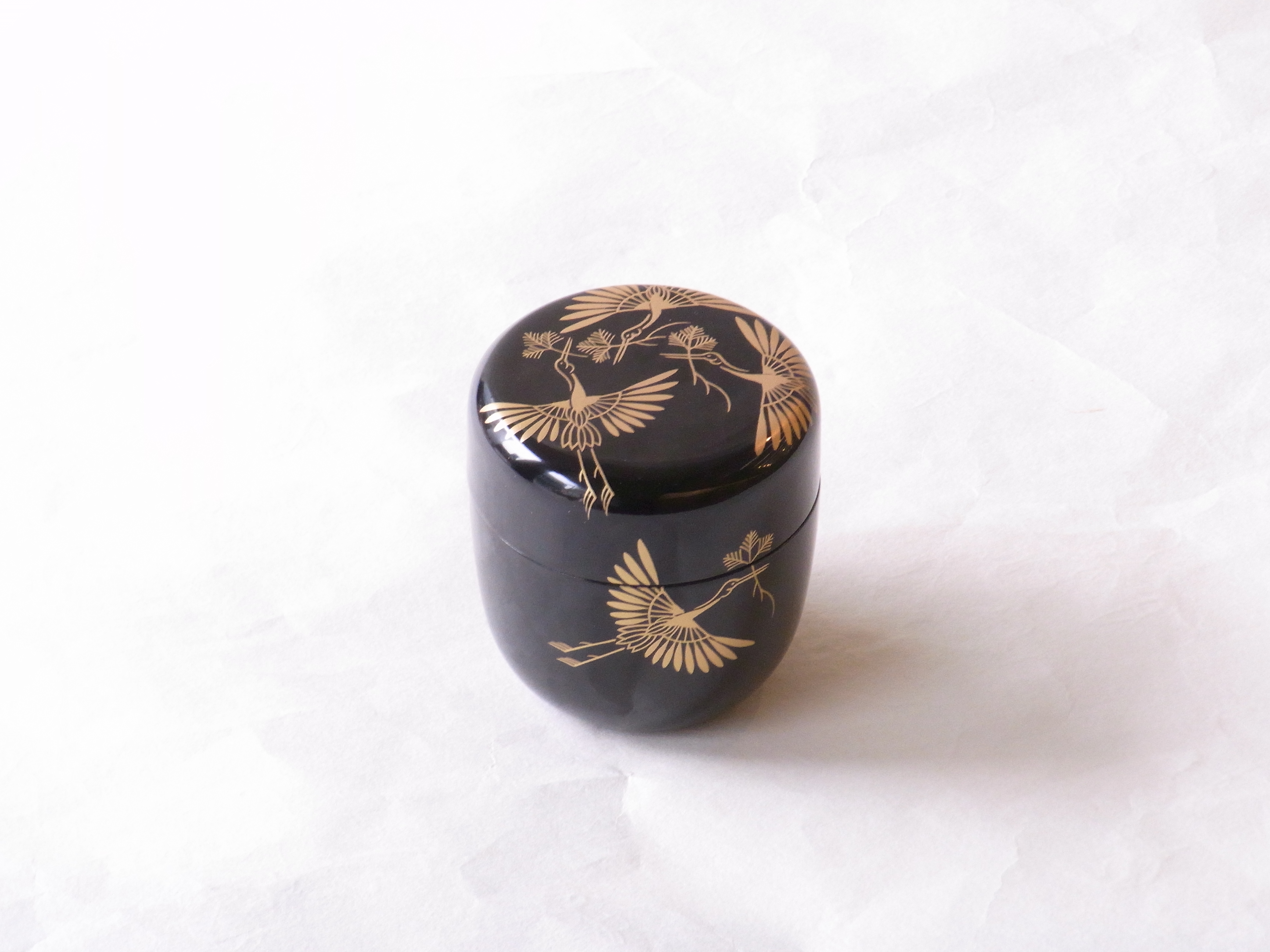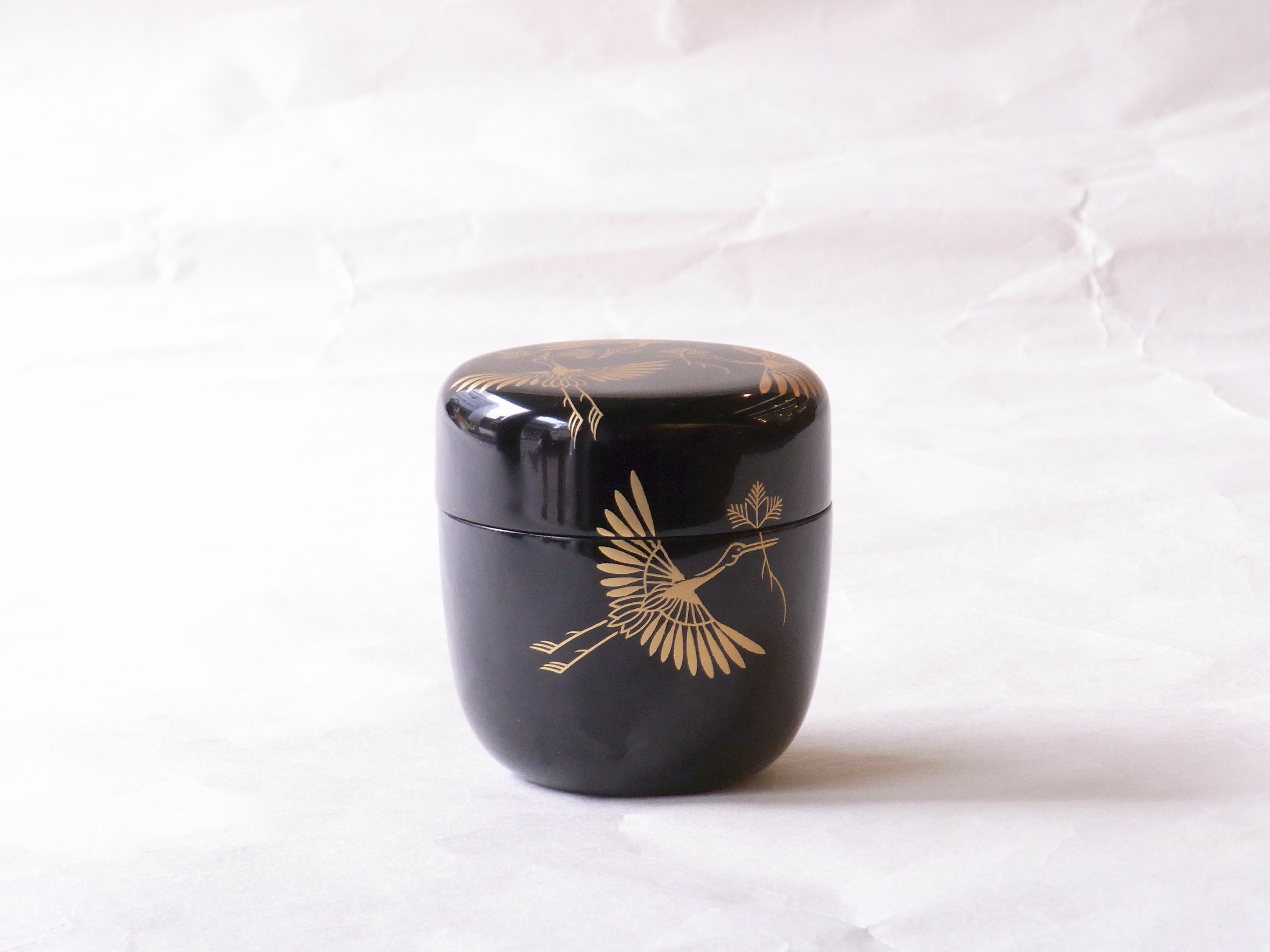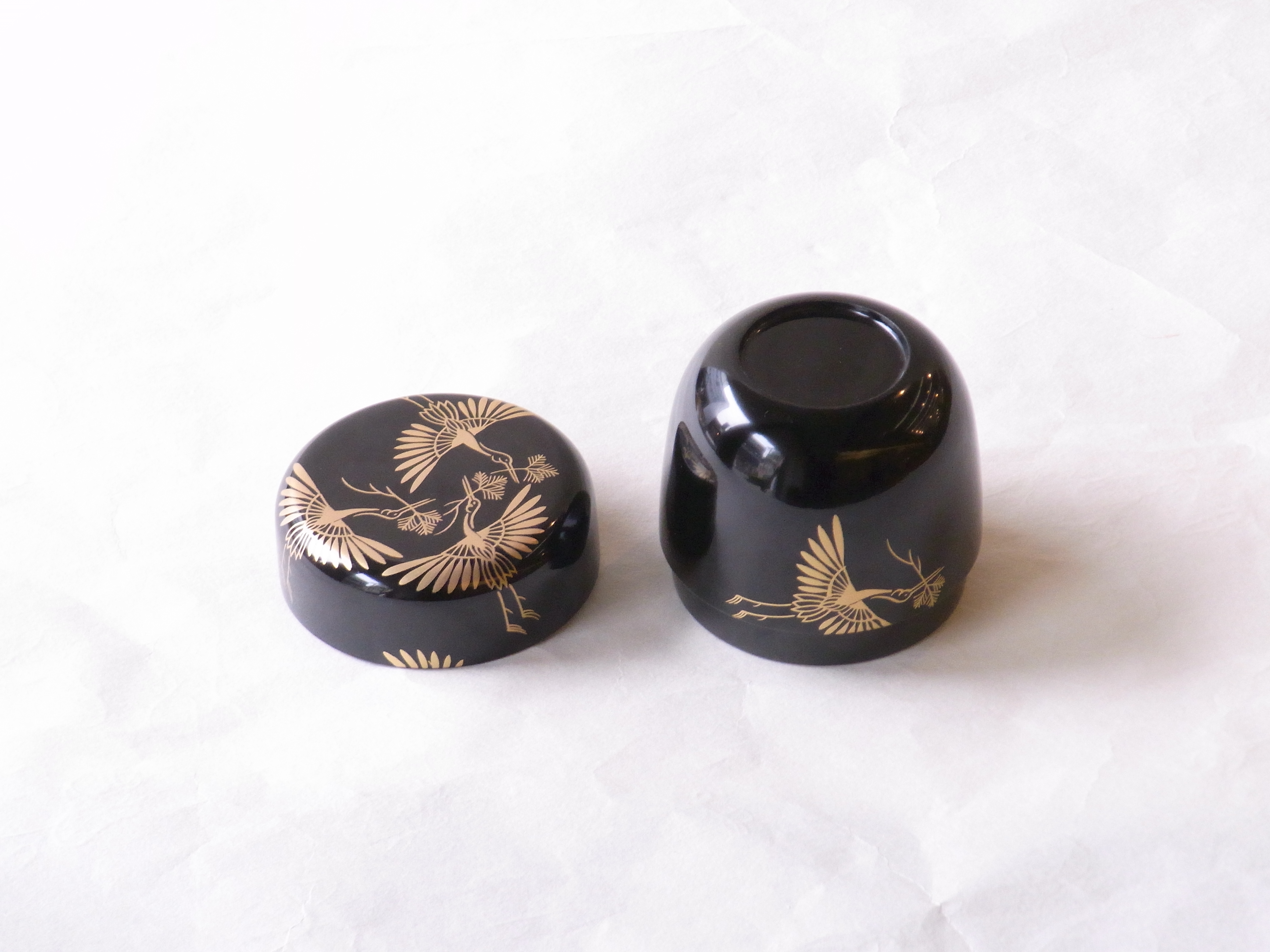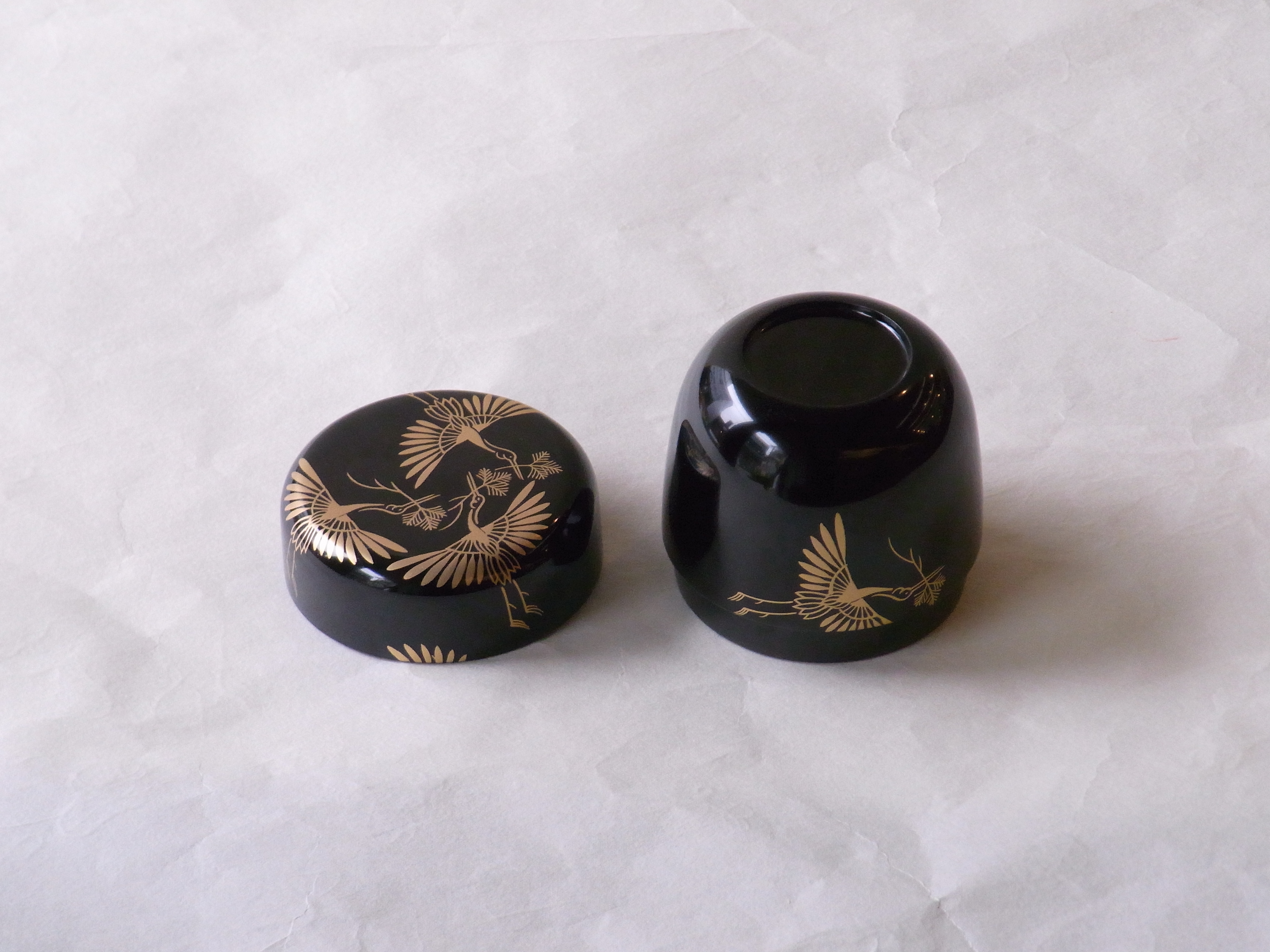越前塗から宮田宗景 作の木製の中棗のご紹介です。
黒のうるしを塗った本体に「松喰鶴」の蒔絵が施されています。
「松喰鶴」とは、松の小枝をくわえた鶴の文様で、松も鶴も延命長寿の
縁起のいい象徴で、二つ組み合わせることで更におめでたい文様としたものです。
元々、東ローマやペルシャあたりに起源を持ち、日本で奈良時代に流行した
「花喰鳥」を和風化したものです。
松と鶴の吉祥の主題を組み合わせは、平安時代の記述に見られ
正倉院御物の金銀平脱花鳥背八角鏡や、厳島神社古神宝類中の小唐櫃(からびつ)に
この蒔絵文様が見られ、公家調度品の文様として盛行しました。
この松喰鶴文は藤原文化の代表的な文様として様々な分野で用いられ、
近世、近代になっても吉祥の印として愛好されています。
松は無季で年中使えますし、鶴も特に季節はありませんが
新年やおめでたい時に使うとぴったりかもしれません。
内側は黒無地ですが、木製の本うるし塗りで蒔絵もしっかりと描かれている
ことからすると、大変リーズナブルで気軽に使うことが出来ます。
径 6.5㎝ 高さ 7㎝
木製 うるし塗
It is an introduction of the wooden nakasada of Miyata Munekage from Echizen-nuri.
The main body painted with black urushi is decorated with maki-e of “Matsutakezuru”.
“Matsutakezuru” is a pattern of cranes with pine twigs in their mouths, and both pines and cranes have a long life span.
It is a good symbol of luck, and it is the one that it is a more happy pattern by combining two.
Originally originated in Eastern Rome and Persia, it became popular in Nara period in Japan.
It is a Japanese style of “Hanatodori”.
The combination of the theme of the yoshiyoshi of pine and cranes is seen in the description of the Heian period.
The gold and silver flat flower bird dorsal octagonal mirror of the Shosoin gomono, and the small karato (karabitsu) in the Ancient Godtreasures of Itsukushima Shrine
This Maki-e pattern was seen, and it was active as the pattern of the public family furnishing article.
This Matsutake Tsurubun is used in various fields as a representative pattern of Fujiwara culture,
It is loved as a sign of good luck even in the early modern times and modern times.
Pines can be used all year round without season, and cranes are not particularly seasonal.
It might be perfect if you use it in the New Year or when you want to have a happy time.
The inside is black plain, but the maki-e is also drawn firmly with a wooden book urushi coating.
Therefore, you can use it easily at a very reasonable price.
這是宮田宗景作品的木中木從Echizen漆的介紹。
在塗有黑色閏子的車身上,有一幅”松木”的畫。
“松木”是松枝的圖案,松和松的壽命延長
這是一個吉祥的象徵,它成為一個圖案,我想通過結合兩個進一步。
它起源于東羅馬和波斯,在日本奈良時代流行。
“哈納卡鳥”是日式風化。
在平安時代的描述中,將松木和柳子的吉祥主題相結合
在倉倉宮的金銀平脫花鳥背八角鏡,和古神寶的神社
看到這個漫畫圖案,並作為公共家庭傢俱的圖案進行。
松井裕久在各個領域都被用作藤原文化的代表性圖案,
近現代,即使現代,它一直被愛作為吉祥的標誌。
松樹是無季的,可以全年使用,沒有特別的季節。
新年或新年,當你想使用它時,它可能是完美的。
裡面是黑色的,但木書的光澤畫被牢牢地描繪出來。
因此,你可以隨意使用它,非常合理。
这是宫田宗景作品的木中木从Echizen漆的介绍。
在涂有黑色闰子的车身上,有一幅”松木”的画。
“松木”是松枝的图案,松和松的寿命延长
这是一个吉祥的象征,它成为一个图案,我想通过结合两个进一步。
它起源于东罗马和波斯,在日本奈良时代流行。
“哈纳卡鸟”是日式风化。
在平安时代的描述中,将松木和柳子的吉祥主题相结合
在仓仓宫的金银平脱花鸟背八角镜,和古神宝的神社
看到这个漫画图案,并作为公共家庭家具的图案进行。
松井裕久在各个领域都被用作藤原文化的代表性图案,
近现代,即使现代,它一直被爱作为吉祥的标志。
松树是无季的,可以全年使用,没有特别的季节。
新年或新年,当你想使用它时,它可能是完美的。
里面是黑色的,但木书的光泽画被牢牢地描绘出来。
因此,你可以随意使用它,非常合理。
